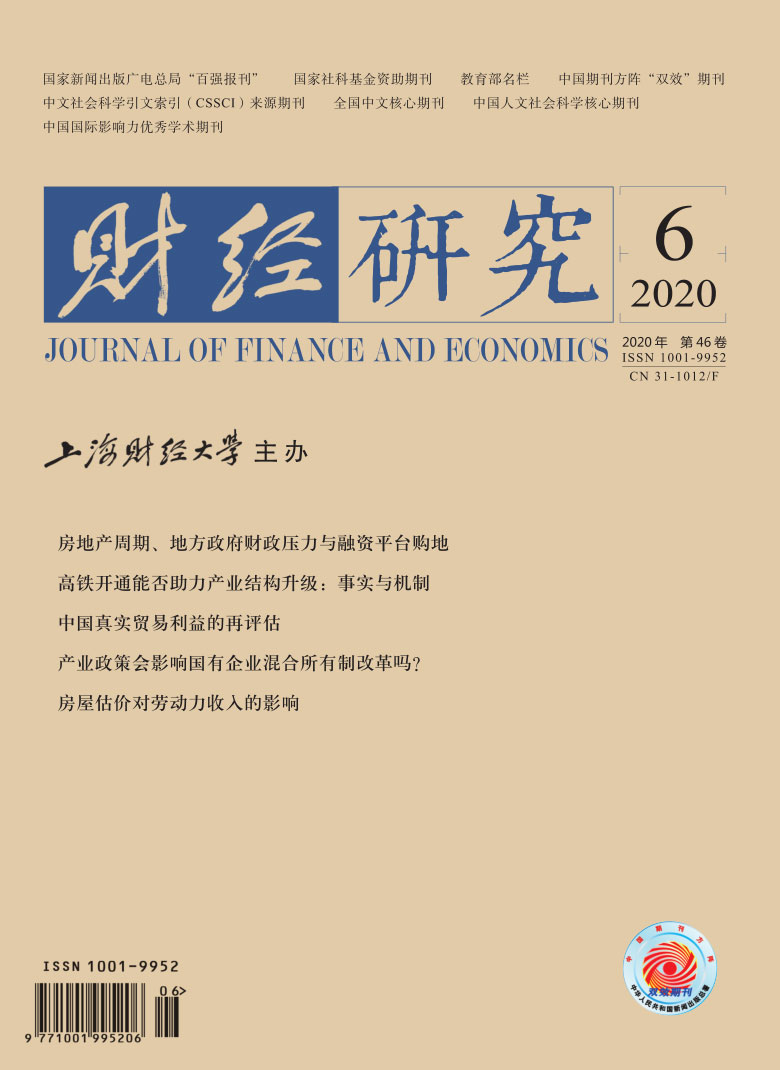Agricultural industry agglomeration refers to the farmers whose business focus on certain agricultural products, and organic agglomeration of enterprises in spatial geography, forming a professional and large-scale market organization network. At present, there are few researches to discuss the influence of agricultural industry agglomeration on agricultural labor productivity. Based on the panel data of 275 cities in China from 1999 to 2013, this paper examines the effect of agricultural industry agglomeration on agricultural labor productivity and its mechanism. The research findings are: (1) China’s agricultural industry agglomeration can significantly improve agricultural labor productivity. The increase of agricultural industry agglomeration degree and the difference of agricultural industry agglomeration degree in different regions explain the “rapidity” and “heterogeneity” of agricultural labor productivity improvement respectively. (2) Agricultural industry agglomeration promotes the improvement of agricultural labor productivity through the transmission mechanism of the internal scale economy at the household level, the localization economy at the industrial level and the increasing returns to scale brought by the urbanized economy at the city level. (3) The effect of agricultural industry agglomeration on agricultural labor productivity is greater than that of non-agricultural cities; the effect of agricultural industry agglomeration on agricultural labor productivity in southern cities is greater than that in northern cities. This paper provides a possible way to solve the challenges faced by Chinese agriculture.
 / Journals / Journal of Finance and Economics
/ Journals / Journal of Finance and EconomicsJournal of Finance and Economics
LiuYuanchun, Editor-in-Chief
ZhengChunrong, Vice Executive Editor-in-Chief
YaoLan BaoXiaohua HuangJun, Vice Editor-in-Chief
Agricultural Industry Agglomeration and Agricultural Labor Productivity in China: An Empirical Study Based on Data from 275 Cities
Journal of Finance and Economics Vol. 46, Issue 06, pp. 49 - 63 (2020) DOI:10.16538/j.cnki.jfe.2020.06.004
Summary
References
Summary
[1]Du J J, Zhang J W, Shao S. Formation and development of China's agricultural industry agglomeration under the background of supply side reform[J]. Finance and Trade Research, 2017,(5): 33¬¬−46.(In Chinese)
[2]Fu J Y,Shi L Y. The externality of industries, the competitive environment of enterprises, and the productivity[J]. Management World, 2009,(8):65−72.(In Chinese)
[3]Gan C H,Zheng R G,Yu D F. An empirical study on the effects of industrial structure on economic growth and fluctuations in China[J]. Economic Research Journal, 2011,(5):4−16.(In Chinese)
[4]Jia X M,Li P.Degree of agriculture concentration and agricultural economic growth:empirical test spatial layout changes of 12 types of crops in china[J]. Journal of China Agricultural University, 2014,(1):209−217.(In Chinese)
[5]Li W J,Li Y T.Does industrial policy promote corporate investment [J]. China Industrial Economics, 2014,(5):12−134.(In Chinese)
[6]Lin Y F,Jiang Y. Development strategy, economic structure and banking industry structure: facts in China[J]. Management World, 2006,(1):29−40.(In Chinese)
[7]Liu X H,Du J J,Yang L L. Agricultural industry cluster,information acquisition and agriculture income [J]. Economic Survey, 2018,(4):30−36.(In Chinese)
[8]Liu X Y. Agglomeration economies and labor productivity: evidence from Chinese urban panel data[J]. The Journal of Quantitative & Technical Economics, 2009,(7):109−119.(In Chinese)
[9]Comb P P,Mayer T,Thisse J F.Economic Geography:the Integration of Regions and Nations[M].An H S Translation. Beijing:China Renmin University Press,2011.(In Chinese)
[10]Sun P Y,Han S,Xu Q Q.The dynamic impact of industrial agglomeration on labor productivity[J]. The Journal of World Economy, 2013,(3):33−53.(In Chinese)
[11]Wei W,Li W M. The analysis of influence factors and the path of promoting about agricultural labor productivity[J]. Issues in Agricultural Economy, 2012,(10):29−35.(In Chinese)
[12]Wen Z L,Ye B J. Analyses of mediating effects: the development of methods and models[J]. Advances in Psychological Science, 2014,(7):731−745.(In Chinese)
[13]Xiao W D. Geographical agglomeration of China's plantation industry: temporal and spatial characteristics, trends and influencing factors[J].Chinese Rural Economy, 2012,(5):19−31.(In Chinese)
[14]Xie J P,Liu L H,Liang L, et al..Cordination for value networks of agricultural social enterprises:an empirical analysis from the perspective of social embeddedness[J]. Journal of Finance and Economics, 2017,(10):83−96.(In Chinese)
[15]Yu K,Guo P,Zhang L. Determinants of the dynamic evolution of regional differences in agricultural labor productivity in my country-decomposition research based on stochastic frontier model[J]. Economic Science, 2011,(2):42−53.(In Chinese)
[16]Zhu M.Services input and the catching-up process of agricultural labor productivity in China:a new explanation of periodical characteristics of agricultural labor productivity[J]. Journal of Finance and Economics, 2016,(7):111−121.(In Chinese)
[17]Arrow K J. The economic implications of learning by doing[J]. The Review of Economic Studies,1962,29(3): 155−173.
[18]Henderson V J.Marshall′s scale economies[J].Journal of Urban Economics,2003,53(1):1−28.
[19]Jacobs J.The Economy of Cities[M].New York:Random House,1969.
[20]Kalirajan K P, Huang Y. An alternative method of measuring economic efficiency:The case of grain Production in China[J].China Economic Review,1996,7(2):193−203.
[21]Kawasaki K.The costs and benefits of land fragmentation of rice farms in Japan[J].Australian Journal of Agricultural and Resource Economics,2010,54(4):509−526.
[22]Kevane M.Agrarian structure and agricultural practice:Typology and application to western Sudan[J]. American Journal of Agricultural Economics,1996,78(1):236−245.
[23]Marshall A .Principles of Economics[M].9th edition,London:Macmillan,1961.
[24]Morgan S.Should sociologists use instrumental variables?[R].Working Paper, 2002.
[25]Munnich L W Jr,Schrock G,Cook K. Rural knowledge clusters:The challenge of rural economic prosperity [R]. Working Paper,2002.
[26]Otsuka K.Food insecurity,income inequality and the changing comparative advantage in world agriculture [J].Agricultural Economics,2013,44(S1):7−18.
[27]Polyzos S,Arambatzis G. Labor productivity of agricultural sector in Greece:Determinant factors and interregional differences analysis[R]. Working Paper,2005.
[28]Romer P M. Increasing returns and long-run growth[J].Journal of Political Economy,1986,94(5):1002−1037.
[29]Rosenthal S S,Strange W C.Geography,industrial organization and agglomeration[J].Review of Economic and Statistic, 2003,85(2):377−393.
[30]Schultz T. W.Transforming traditional agriculture[M].New Haven:Yale University Press,1964.
[31]Xin X F, Qin F. Decomposition of agricultural labor productivity growth and its regional disparity in China [J]. China Agricultural Economic Review, 2011,3(1):92−100.
Cite this article
Du Jianjun, Xie Jiaping, Liu Bomin. Agricultural Industry Agglomeration and Agricultural Labor Productivity in China: An Empirical Study Based on Data from 275 Cities[J]. Journal of Finance and Economics, 2020, 46(6): 49-63.
Export Citations as:
For
ISSUE COVER
RELATED ARTICLES





 6348
6348  11396
11396

